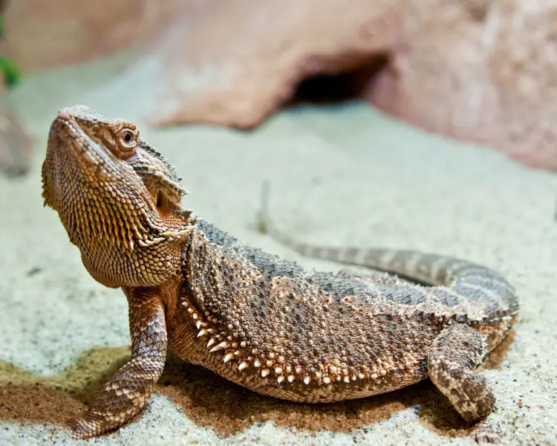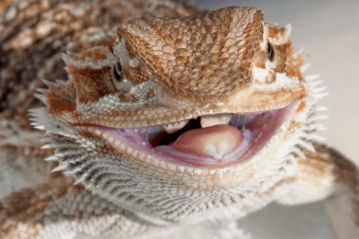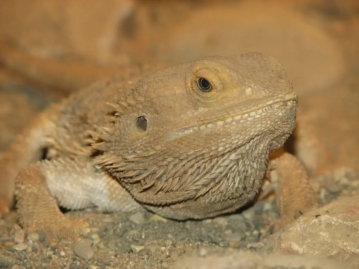Bearded Dragons
Reptilarium Animals
Bearded Dragons
Conservation status (Least Concern)


The central bearded dragon (Pogona vitticeps ), also known as the inland bearded dragon, is a species of agamid lizard found in a wide range of arid to semiarid regions of eastern and central Australia.
The Central bearded dragon is a species of lizard with a flattened body, entirely covered by specialised scales. The dragons look rather stout and thorny with large and rounded eyes. The specialised scales form spiny projections, densely covering the flap of their skin. The dragons have orbital crests, running from behind their eyes, covering the face and reaching the tip of the snout. Strong legs are covered with pointed and shingled scales, each leg having 5 clawed digits at the end. Males are larger than females though having more flattened body. When in danger, the guttural pouch of a male dragon becomes notably stronger and darker. Colour of the Central bearded dragons usually depends on temperature and locality. They are mainly grey with occasional shades of black, brown, fawn or orange. The area around their eyes and at the side of the head is often yellow in colour.



These animals are widely distributed over eastern and central parts of Australia, being found from the southeastern Northern Territory the eastern part of southern Australia. They live in very diverse habitats including desert, dry forests and scrub-lands. These dragons are semi-arboreal animals, often seen basking on picnic tables, fence posts or fallen branches.
Normally, these animals are diurnal. Nevertheless, after hot days they can be frequently seen out on roads. The Central bearded dragon is an excellent climber, often found perched in bushes as well as on branches of trees and fence posts, spending as much time perching as it does on the ground. They are not social animals, though sometimes they congregate into groups to feed and bask. Gathering in groups, they follow certain hierarchy: when basking, usually the highest-ranking individuals take the sunniest and highest spots and the rest of the group gets lower spots. Females often use their beard for aggression displays while males will display their beard during the mating season as a part of courtship ritual.
The Central bearded dragon is an opportunistic omnivore who is not very choosy about food. The dragon has stomach which is able to accommodate large amount of food. These dragons feed upon small rodents, lizards, insects, spiders well as plants.
Fun Facts for Kids
- These lizards got their name due to their ability of making their throat look like a beard by inflating and puffing it out as well as the ability of their throat to turn to black when threatened.
- If a leg or tail of a bearded dragon is cut off, it will not grow back unlike other lizards.
- The bearded dragon often uses body posture as a signal. For example, standing on 3 legs and rotating the fourth leg in the air, the dragon can greet members of its group or show subjection to a more dominant male.
- When threatened by a predator, the dragon flattens its body and enlarges its throat.
- These lizards regulate temperature of their body by changing shades of skin color from dark to light and backwards.

